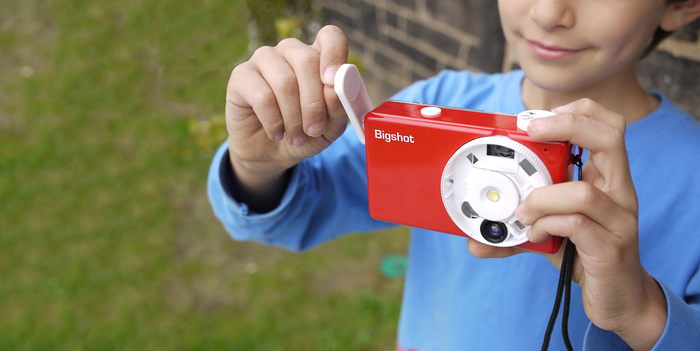Making Pictures

A picture is not just a picture. It is an iceberg, a sign of vast complexity below the waterline. The invisible detail certainly includes vision and art, but also years of hardware development, computer programming, manufacturing, high-quality optics, and the entire economic system that builds, markets, sells, and buys all things photographic. This is why I believe the picture—a totem for the entire photographic culture—can be even more fully appreciated when we have the chance to look at its foundations, including the networks and processes that contributed in some small way to its existence. I wanted to share two products that I have greatly enjoyed both as an adult and as a father of two young children. These products are construction projects, and they help us to remember just what it means to really make pictures, from soup to nuts, and how the photographic form authentically combines art, science, and technology.
My first product is a build-it-yourself camera kit called BigShot. This kit is the brainchild of Professor Shree Nayar at Columbia University’s CAVE Lab. He noticed how taking pictures empowers children to become communicators—to document and express their hopes for a better world. Nayar saw in the camera a form of social empowerment, and he put together a team to invent a new kit to combine this social empowerment with technological empowerment. BigShot comes in tiny parts, with detailed on-line instructions that teach you everything about the camera, from optics and electronics to its mechanical detent springs, see-through camera body, and battery-recharging hand-crank. Yes, you read that right. It’s a hand-crank digital camera! The camera takes regular pictures, wide-angle panoramas, and even has a prism to capture two side-by-side images that combines into a 3D image (below). Build one with a child, and you will both learn something new about the components in a small digital camera. This is a form of transformation, taking you from camera consumer to an end-to-end picture maker, and that is a great way to become more intimate with the photographic.

Of course a camera is just one of many ways to make a meaningful image, and my second product is a ten dollar fold-it-yourself cardboard spectrometer:

This little gem takes incoming light and spreads out its spectral ingredients like a prism. Even better, you can tape this to any smartphone camera or iPod. The result: your own amateur spectral analyzer that lets you investigate just how the light in your house really behaves.

So you bought an expensive “full-spectrum” bulb for warmer light? Below are two pictures with the kit. Can you guess which is the spectrum from an old incandescent bulb in the basement, and which is from a fancy and expensive balanced LED light bulb? This kit comes from Public Lab, an organization devoted to empowering citizens to monitor and measure environmental change. It’s an authentic way to build an imaging device, learn how a spectrometer works, then use it as a new experimental tool to do science in your own home. Whichever project you choose, enjoy the transformation from consumer to maker, and see how your relationship to the picture changes along the way.
